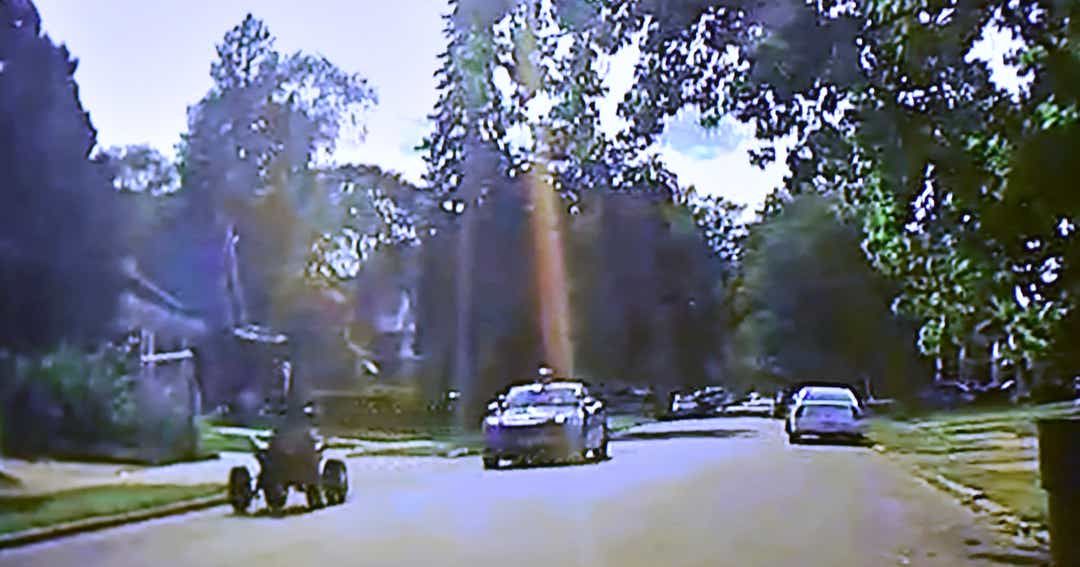An ambitious state program to help Michigan communities fight crime, particularly violent offenses, is getting mixed reviews after eight years of operation.
The Secure Cities Partnership initiated by former Gov. Rick Snyder in 2012 was designed to infuse Michigan State troopers into Detroit, Flint, Pontiac and Saginaw for directed patrols and investigations. The program has since been widened into seven other Michigan cities.
Michigan Incident Crime Reporting Data numbers for those four cities, released by Michigan State Police, show declines of 6% to 49% in violent crimes and 26% to 62% in property crimes.

“The Secure Cities Partnership provided resources to those cities, and in past, had a definite impact on reducing crime there and elsewhere,” State Police spokesman Lt. Mike Shaw said.
Critics, however, question how much credit for that progress belongs to the State Police — and whether the program has provided those cities the best bang for their law enforcement buck.
In 2019, there were 77 Michigan State troopers or analysts deployed to Detroit, Flint and Saginaw. While troopers’ pay averages $140,000 annually, it can run higher, especially for lieutenants, sergeants and detectives, deployed in the program. But at even the most conservative estimate, that works out to at least $10.7 million annually.
Current and retired law enforcement officers who are familiar with the program in the four pilot cities differ on its benefits.
Brian Lipe, a former Saginaw police chief, said the state reinforcements were a godsend for a department decimated by layoffs resulting from budget woes. Between 1994 and 2014, the city's police force shrunk from 170 sworn officers to 55.
“It got ugly,” Lipe said. “Forget any proactive work. We were busy just going from call to call. We were glad to get the help."
But Robert Smith, a retired major with the Oakland County Sheriff's Office, said his department had a different experience with the program in Pontiac, where deputies took over police protection after the city's force was disbanded in 2011.
“When they showed up, they were professional and could be helpful,” Smith said. “But you never knew where or when or how many (troopers) that would mean. ... We didn’t need them passing out speeding tickets. We needed help in problem neighborhoods after the sun went down. And you couldn’t predict if that would happen or not.”
State Sen. James Runestad, R-White Lake, chair of the Finance Committee and member of the Senate Judiciary and Public Safety Committee, said it is unclear if lawmakers have a complete grasp of the program. He said its future is still to be determined, regardless of how successful the data indicate it has been across Michigan.
“We will be asking more questions,” Runestad said. “None of the reports deal with the cost of the program, which are substantial, or whether there is any exit strategy to end them and turn matters over to the locals. Instead, it appears there has been an expansion of this program to other cities, and that was never its intent.”
Impact 'great' in Flint
Count James Tolbert, the former chief of police in Flint, among those who think Secure Cities is worth the state's investment.
Tolbert said the impact on crime was “great” in that city, which for the past decade has been listed on the FBI’s Top 10 list of the most violent cities in the U.S. From 2012 to 2019, the violent crime rate in Flint fell 62%, while the rate of property crime dropped 49%, according to State Police statistics.
Last year, Flint had 43 state police employees assigned to assist a city department depleted by the layoffs of nearly 200 officers since 2012. The city has about 95,000 residents.
“We were in bad shape,” said Tolbert, who left the city in 2016 when a new mayor tapped her own chief. “Some nights, we had only three patrol cars for the whole city. That’s not enough to do the job.”
In a federal affidavit in 2014 warning against further police cuts, Tolbert reported the Flint department received 99,000 calls for service in 2013 but were able to respond to just 51,000.
Tolbert's successor as chief, Tim Johnson, who led the department until 2019, has a different view of the program's worth. Johnson, who had been on the force since 1985, agrees police needed help answering 911 calls but said that wasn't always forthcoming from the troopers deployed to Flint.
“State Police were doing their own thing,” Johnson said. “I didn’t see anything being done and made some statements to the media that they didn’t like, and one day, I went to my office and found three State Police lieutenants waiting for me without an appointment, wanting to discuss remarks I had made to reporters and city council that funds for their troopers might be better used if provided to the department.”
Johnson said he thanked the officers for stopping by because it was saving him a trip to their office to thank them for their service and to tell them they were no longer needed in Flint.
“The conversation was civil, and they indicated they wanted to be part of the effort to protect citizens,” Johnson said. “As far as I could see, they were being paid with taxes and should help respond to 911 calls — which they would only do as backup."
Johnson said he tried to set up a meeting with Col. Kriste Kibbey Etue, who was then the State Police director, and when that didn't happen, spoke with Snyder at a public event.
“I approached him with some ideas — like getting us funded rather than the State Police in Secure Cities,” Johnson said. “He said he would look into it. I never heard anything back.”

Flint Mayor Sheldon Neeley said the city has a “fantastic relationship” with State Police under the partnership.
“And it's going to get better,” he said. “We expect to be hiring on 14 more officers by early next year. We have a new chief and State Police have a new colonel and everyone is making this partnership work.
“I believe in the Secure Cities. If you are a crime victim, you probably don’t feel it’s working, but it's better here now despite the pandemic, which has caused other problems.”
Far from partnership
Johnson, the former Flint chief, isn't alone in his complaint that troopers didn't always coordinate with local police.
Smith, the former Oakland County sheriff's major, said before the program opened in Pontiac, Etue made it clear troopers wouldn't respond directly to 911 calls, although they could be used as backup.
“We tried to set up a system where they would check in on a shift, but that didn’t work,” Smith said. “Some days, you might get six troopers, other days, none.”
MSP's Shaw — who said he once headed the agency's efforts out of the Pontiac substation — said his recollection is that State Police pulled out of Pontiac when the sheriff’s office told them they were no longer needed.
Oakland County Undersheriff McCabe disputes that.
“It was far from a partnership, and in the fall of 2014, some high-ranking State Police officers called for a meeting where we were complimented on doing such a good job in Pontiac that State Police were pulling out and not coming back,” McCabe said. “The reason? They were to be deployed in other cities with more need.”
Regardless of the reason, Pontiac's violent crime rate fell 6% since 2012 and property crime declined 41%. The city has about 59,000 residents.
Pontiac’s crime numbers and decreases are still listed as part of the Secure Cities Partnership, including in a recent report to state lawmakers, although troopers haven’t been assigned there in five years. The State Police’s enforcement activity numbers for 2019 in Pontiac are all marked “0” (zero), with exception of the callout of K-9 units 61 times.
McCabe questions that entry.
“I don’t know how they come up with that,” he said. “We have 12 units of our own that we call out based on need. There’s no way State Police dogs were needed in Pontiac 61 times last year.”
Abrupt end
The Secure Cities partnership came to a similarly abrupt end in Detroit.
During a pursuit in the city's 9th Precinct in August 2017, State Police Sgt. Mark Bessner deployed his Taser on a 15-year-old ATV rider, Damon Grimes. The teen crashed into a truck and died.

MSP stopped patrolling in the precinct, while Bessner was subsequently convicted of involuntary manslaughter in Grimes' death.

“There was a mutual agreement that it wasn’t a good idea for State Police to be doing neighborhood patrols after that,” Detroit Police Assistant Chief David LeValley said. “But we still have a good partnership with them. They are a part of our homicide task force, and they also handle all Detroit freeway patrols.”
State Police report an 11% drop in violent crime and 26% decline in property crime in Detroit between 2012 and 2019.
But LeValley said it wouldn’t be accurate to suggest the Secure Cities initiative is responsible for any specific drops in crime in Detroit, but it has helped, he insists.
“At any given time, we have several initiatives with other agencies, including federal, that all play a part at reducing crime,” he said. “We call on State Police for help and support in all kinds of things, including the recent ‘drifting' and drag racing involving motorists.”
Runestad, a former Oakland County commissioner, said his legislative committee, which holds the “purse strings” for Secure Cities, will be asking questions, including why such cities as Detroit and Pontiac are no longer part of the program but still listed in reports to lawmakers.
“We are approaching a time when there are a lot of businesses, especially small businesses, that are in trouble — maybe as high as 25% across the state,” he said. “That means revenue, jobs and taxes may be lost. That could cause problems with our budget and also funding such programs.”
Shaw said data from those cities are included in all reports because they have been involved in the Secure Cities program, even if they aren't now.
“We are still involved in Detroit task forces and freeways and work in Pontiac at times,” he said. “The Secure Cities Partnership provided resources to those cities and in past had a definite impact on reducing crime there and elsewhere.”
'Doing a good job'
Lipe, the former Saginaw chief who now heads the Grand Blanc police department, has nothing but praise for the Secure Cities initiative.
“Would you rather get the funds to hire your own officers? Sure, but that wasn’t an option,” he said. “But why in the world would you turn away an offer for help on any terms? That would be crazy.”
State Police came in with an analyst who reviewed violent crime and shooting reports and determined hot spots. With more police presence and arrests of some suspects involved with multiple offenses, crime numbers began to drop, Lipe said.
Between 2012 and last year, violent crime plunged 38% in Saginaw, which has about 48,000 residents, and property crime fell 53%.
“It wouldn’t have happened without the State Police,” he said. “I don’t know what would have happened.”
There was some grumbling the State Police wanted to just work homicides and other high-profile crimes while leaving city police to handle break-ins and other property crimes, Lipe said, but the two agencies worked that out.
“We had some meetings with the (State Police) commander, and city officers were paired with State Police on some of the bigger cases,” he said.
Today, Saginaw's police department numbers about 62, but with the help of about 24 troopers, it's keeping the city safe, current Chief Bob Ruth said.
“We have eight troopers here working investigations and 16 on the road,” Ruth said. “They are doing a good job. “
Ruth, a 27-year veteran who has led the department for six years, said Saginaw once topped all cities of its size in FBI violent crime statistics. And while he's grateful for the decline in crime since 2012, he says violent offenses are turning back up this year.
“We’ve had 15 homicides and 75 shootings this year — we had half that for the entire year last year,” Ruth said. He says factors include an increase in domestic violence stemming from the COVID-19 pandemic and “rallies, protests and looting” following the police-involved death of George Floyd in late May in Minneapolis.
He said Saginaw needs the Secure Cities program and the troopers it provides.
“I don’t know if there is any plan to move them out, but I hope they stay here for some time,” Ruth said. “We couldn’t keep the city safe without them.”
mmartindale@detroitnews.com
(248) 338-0319
"crime" - Google News
September 16, 2020 at 10:26AM
https://ift.tt/3kmUg0K
Michigan cities see crime drop during state initiative, but critics question value - The Detroit News
"crime" - Google News
https://ift.tt/37MG37k
https://ift.tt/2VTi5Ee
Bagikan Berita Ini















0 Response to "Michigan cities see crime drop during state initiative, but critics question value - The Detroit News"
Post a Comment